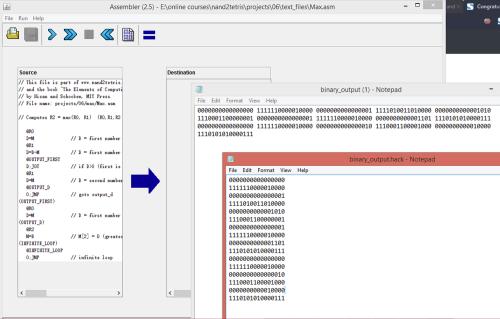Hi. I was able to create a parser using Python. My platform is jdoodle.com.
It accepts an .asm file and writes a binary form of the former in a .txt format. I have to save it again as .hack in Notepad before I compare them to the assembler.
The problem is, the assembler keeps on saying that Line 1 is over 16 characters. Yet this is not the case...

binary_output(1) is its original form. I have to enter each item again and again until each line is 16 characters long. I save it as binary_output.hack in Notepad then feed it to the Assembler.
Unfortunately, Assembler keeps on saying that Line 1 is 16 characters long. I have checked it again and made sure there was no backspace, but I still got the same results.
How do I resolve this? Thanks.